Diversified farms and large gardens have some of the highest bee diversity of any habitat. When habitat heterogeneity is maintained and pesticide applications are minimal, many species of bees can thrive on both cultivated flowers and flowering weeds. Several native VT species are closely associated with the flowers of cultivated plants and are often easier to find and probably more abundant on farms than in the "wild".
Many great resources exist to help farmers and homeowners improve the pollinator habitat on their land. A few are listed below:
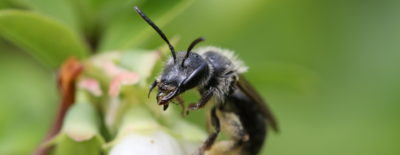
Blueberries
Blueberries are visited by a variety of bees, and host to specialists in at least 4 genera. Image courtesy Spencer Hardy.
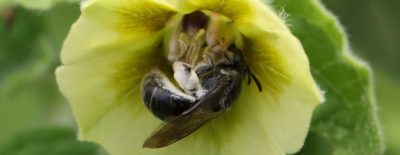
Groundcherries
Ground-cherries and Tomatillos, including the garden varieties, support four specialists. They range from widespread and abundant to very rare and localized. A plant worth knowing (or growing). Image courtesy Michael Veit.
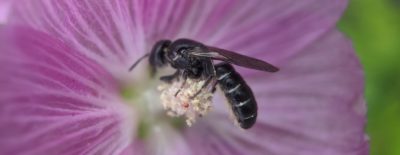
Bellflowers
Both cultivated and wild Bellflowers are possible hosts of a relatively common Leafcutter Bee as well as a non-native Scissor Bee known from as close as Montreal. Image courtesy Spencer Hardy.
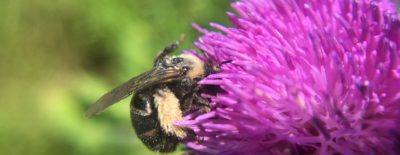
Thistles
These often maligned "weeds" are beloved by two specialists in Vermont. Both are relatively distinctive and in need of more data on their distribution and abundance. Image courtesy Spencer Hardy.
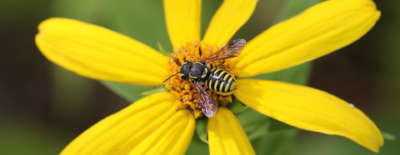
Sunflowers
Sunflowers, both native and cultivated, host a range of specialists - some rare, some ubiquitous. Image courtesy Spencer Hardy.
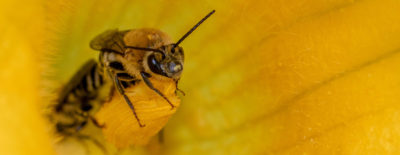
Squash
Squash bees (Peponapis Pruinosa) are likely the major pollinator of large-flowered cucurbits, both in small gardens and large farms. Image courtesy Spencer Hardy.






